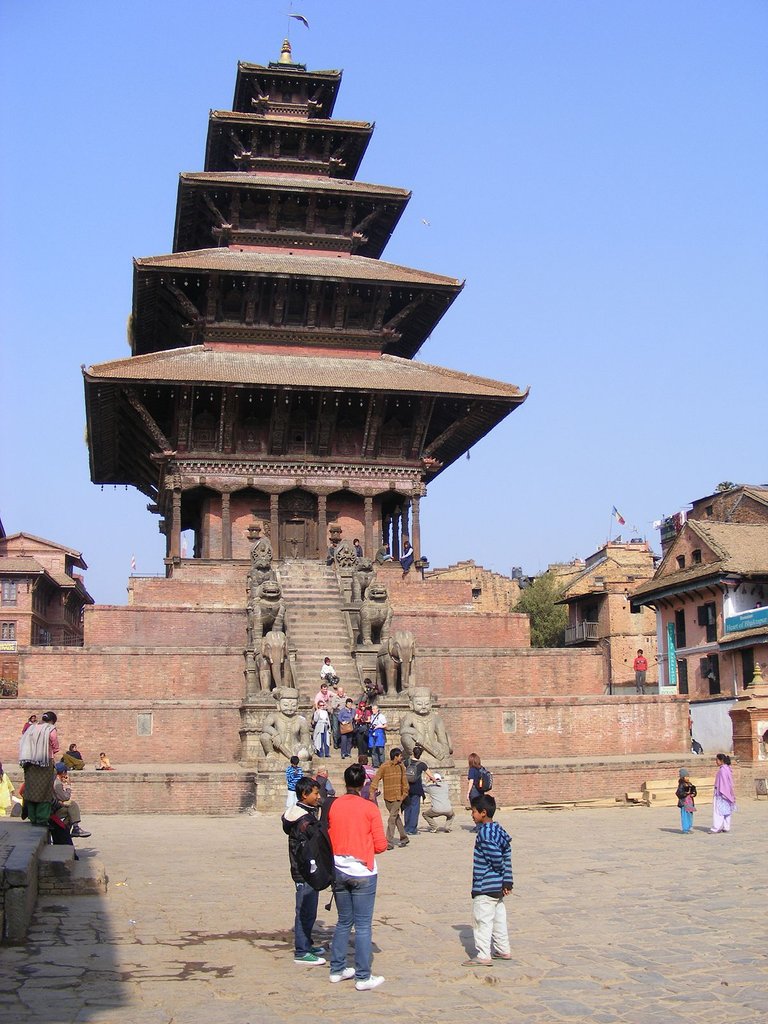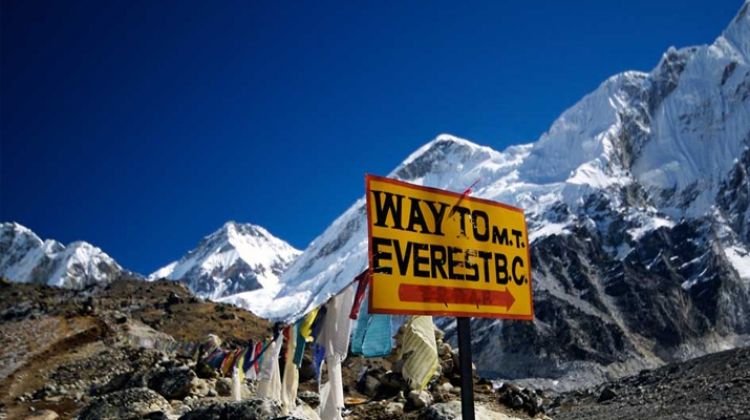
BOUDHANATH STUPA
Boudhanath is a stupa in Kathmandu, Nepal. Located about 11 km (6.8 mi) from the center and northeastern outskirts of Kathmandu, the stupa's massive mandala makes it one of the largest spherical stupas in Nepal.
The Buddhist stupa of Boudhanath dominates the skyline; it is one of the largest stupas in the world. The influx of large populations of refugees from Tibet has seen the construction of over 50 gompas (Tibetan convent) around Boudhanath. As of 1979, Boudhanath is a UNESCO World Heritage Site. Along with Swayambhu, it is one of the most popular tourist sites in the Kathmandu area.
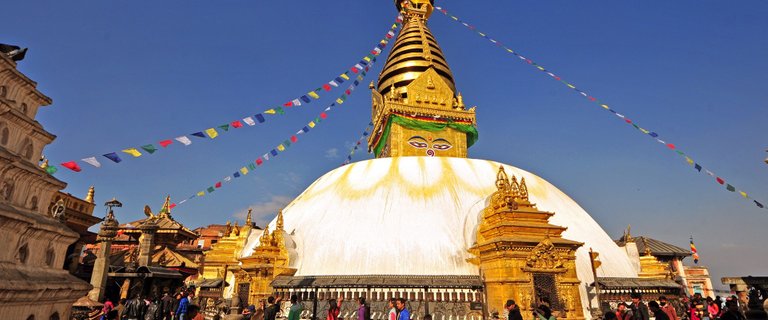
SWAYAMBHUNATH
The stupa consists of a dome at the base, above which is a cubical structure painted with eyes of Buddha looking in all four directions. There are pentagonal Toran present above each of the four sides with statues engraved in them. Behind and above the Torana there are thirteen tiers. Above all the tiers there is a small space above which the Gajur is present. The stupa has many artifacts inside it.
The dome at the base represents the entire world. When a person awakes (represented by eyes of wisdom and compassion) from the bonds of the world, the person reaches the state of enlightenment. The thirteen pinnacles on the top symbolize that sentient beings have to go through the thirteen stages of spiritual realizations to reach enlightenment .

ANNAPURNA BASE CAMP
The Annapurna Massif lies in the northern region of Nepal and Annapurna Base Camp trek is a stunning opportunity to relish the massif. Annapurna, a Sanskrit name, denotes to mean the Goddess of Fertility and indeed you will see the meaning manifest itself in full measure as you trudge through its terraced fields, gorges, and lush green forests.
While the peaks themselves stretch over 55km, the Annapurna base camp trek brings you within breath-taking distance of the 7,000m high ranges after a trek of 10-11 days. Few mountains can boast of the raw beauty that the base camp of Annapurna possesses! It brings you through oak, pine, rhododendron and merrily dancing rice fields to a silvery carpet of snow and capricious slopes of lush valleys.
.jpg)
LUMBINI
Lumbini is a Buddhist pilgrimage site in the Rupandehi District of Nepal. It is the place where, according to Buddhist tradition, Queen Mayadevi gave birth to Siddhartha Gautama in 563 BCE.Gautama, who achieved Enlightenment some time around 528 BCE, became the Buddha and founded Buddhism. Lumbini is one of many magnets for pilgrimage that sprang up in places pivotal to the life of the Buddha.
The ancient Mayadevi Temple, Lumbini, Nepal.
Lumbini has a number of temples, including the Mayadevi Temple and several others which are still under repairing. Many monuments, monasteries and a museum, the Lumbini International Research Institute, are also within the holy site. Also there is the Puskarini, or Holy Pond, where the Buddha's mother took the ritual dip prior to his birth and where he had his first bath.
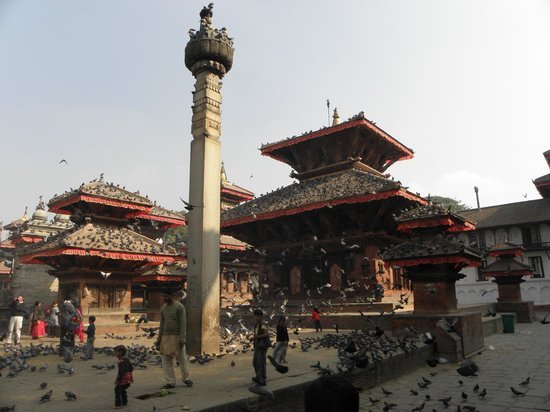
HANUMAN DHOKA SQUARE
Kathmandu's royal palace, known as the Hanuman Dhoka, was originally founded during the Licchavi period (4th to 8th centuries AD) but the compound was expanded considerably by King Pratap Malla in the 17th century. Sadly, the sprawling palace was hit hard by the 2015 earthquake and damage was extensive. At the time of research, the palace was closed for reconstruction, but once this work is complete, visitors should again be able to access the beautiful royal courtyards and royal museum.
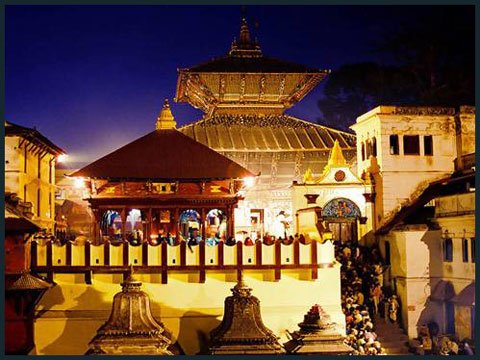
PASUPATINATH TEMPLE
Dedicated to Lord Shiva, Pashupatinath is one of the four most important religious sites in Asia for devotees of Shiva. Built in the 5th century and later renovated by Malla kings, the site itself is said to have existed from the beginning of the millennium when a Shiva lingam was discovered here.
The largest temple complex in Nepal, it stretches on both sides of the Bagmati River which is considered holy by Hindus. The main pagoda style temple has a gilded roof, four sides covered in silver, and wood carvings of the finest quality. Temples dedicated to several other Hindu and Buddhist deities surround the temple of Pashupatinath.
BHAKTAPUR DURBAR SQUARE
Located about 20 km east of Kathmandu in the Kathmandu Valley, Bhaktapur is known as the 'City of Devotees', the 'City of Culture', the 'Living Heritage', and 'Nepal's Cultural Gem'. It is one of the 3 royal cities in the Kathmandu Valley. The others are Kathmandu, the capital of Nepal, and Patan.
Bhaktapur is filled with monuments, most terra-cotta with carved wood columns, palaces and temples with elaborate carvings, gilded roofs, open courtyards. The city is dotted with pagodas and religious shrines.
Lying along the ancient trade route between India and Tibet, Bhaktapur is surrounded by mountains and provides a magnificent view of the Himalayas.
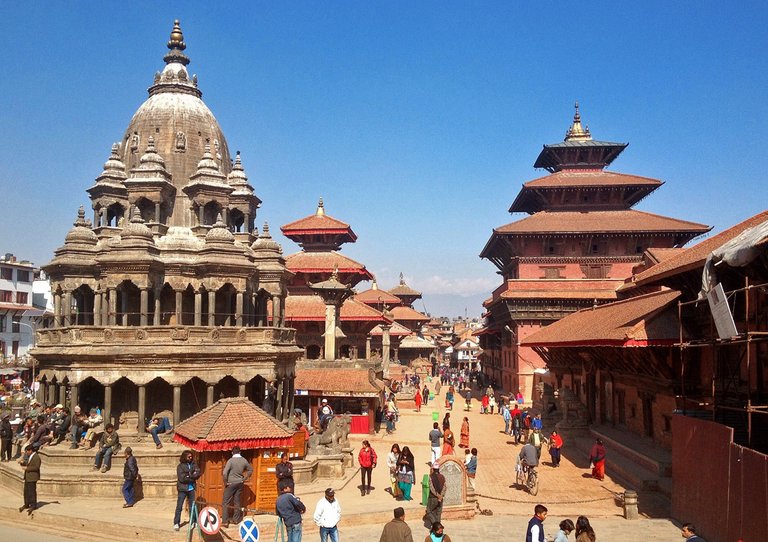
PATNAN DURBAR SQUARE
Patan, the oldest of all the three cities of Kathmandu valley. It is the best known for its artistic heritage. It is probably one of the oldest Buddhist City in the world. The city is situated on a plateau across Bagmati River. Another name of Patan, is Lalitpur. The city is surrounded by 4Stupas as 4 corners of Patan, one at each corner of its cardinal points.
EVEREST BASE CAMP
The Everest, region is one of the most famous tourist destinations in Nepal , which is famous for its fantastic mountain peaks and the beauty on the hills. Most of the places to this spot go through ridges and trails, but you would have ample space to rest and have meal on your way. And one of the best things about this place is that you don’t have to worry about being lost, as you can ask anybody for the next village. The people here are very friendly and offer help and support even to strangers. The people who live here are mostly shepherds and understand English; some even speak it fluently.

MUSTANG
Sheltered by some of the world’s highest mountains, the 8000-meter peaks of Annapurna and Dhaulagiri, bordering China and the Tibetan plateau, Mustang is ancient forbidden kingdom, where strict regulation of travelers helped Tibetan traditions survive stronger than Tibet proper. Upper Mustang was a restricted demilitarized area until 1992, which makes it one of the most preserved regions in the world due to its relative isolation from the outside world, with a majority of the population still speaking traditional Tibetic languages. The name "Mustang" is derived from the Tibetan word meaning, "Plain of Aspiration." Upper Mustang was only opened to foreigners in 1992 (annual quota at present of 1,000 people). It is a popular area for trekking and can be visited year round .
